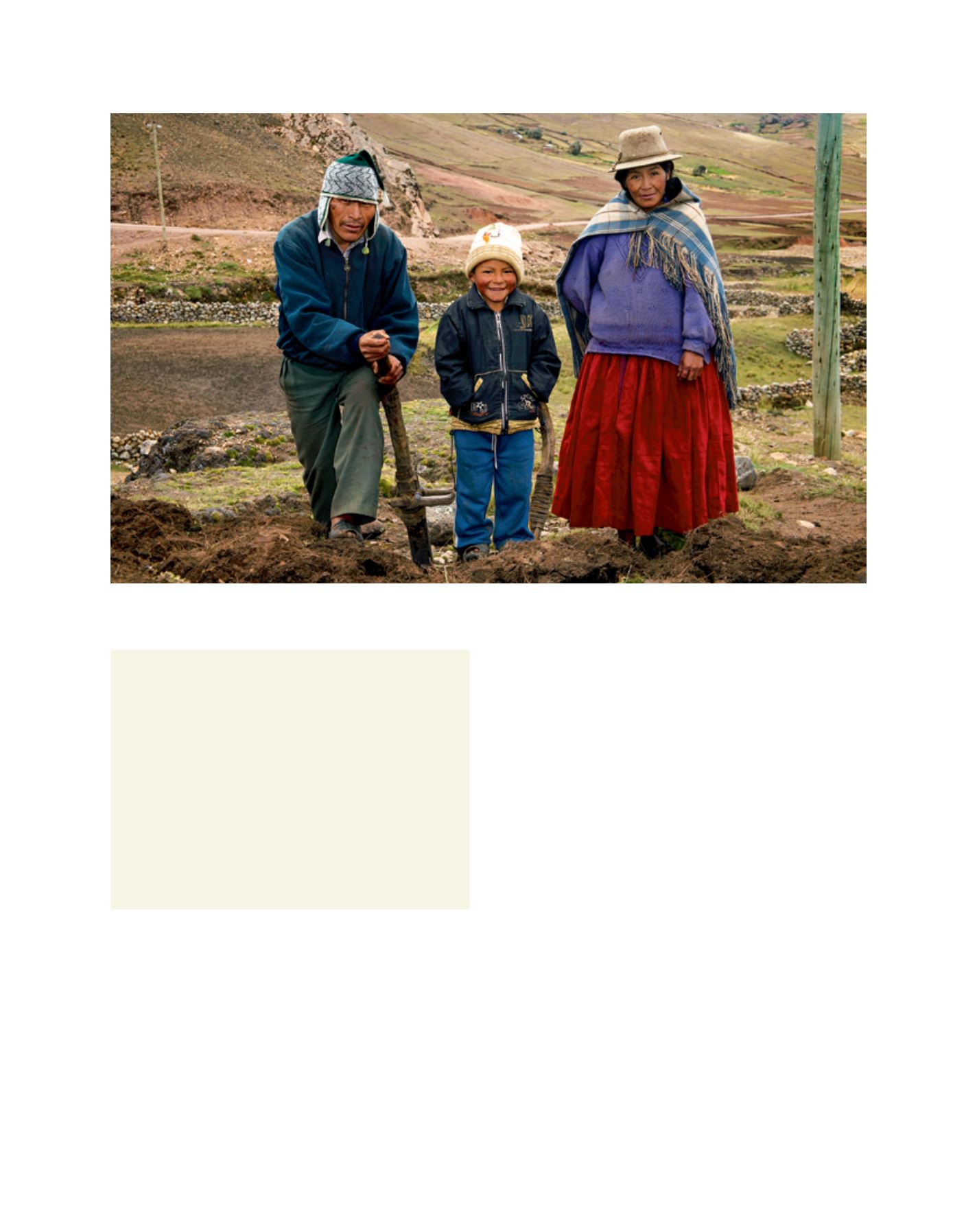

[
] 96
Image: Bioversity International/Alfredo Camacho
Farmers preparing soil for planting of quinoa in Bolivia. Bioversity International and partners have been researching quinoa and other
Andean grains for over a decade
and malnutrition.
8
Risk of hunger is reduced as the multiplic-
ity of foods grown become available at different times and in
different niches throughout the year. The quality of foods and
dietary diversity is an important factor in reducing malnu-
trition at the household level.
9
Furthermore, as foods with
high nutritional quality and taste are increasingly demanded
in local and national markets, agriculturally diverse products
provide family farmers with entrepreneurial opportunities
in higher value markets. This, however, requires increased
institutional support, and production and harvest technolo-
gies that can meet demands with regularity and quality.
Family farmers also tend to rely on agroecological tech-
niques to grow and protect their crops on their small parcels
of land. Given their limited incomes to use purchased
inputs, and the fact that much of the technology and farm
machinery available is economically efficient at larger
scales, farmers use their knowledge of plant combinations,
multiple cropping, agroforestry, sylvopastoralism and small
livestock in homestead production to maximize total yields
and benefits from small parcels with high concentrations of
agricultural biodiversity.
10
The new post-2015 Sustainable Development Goals (SDG)
place people’s participation at the centre of the vision for
change. In this light, several principles are crucial for achiev-
ing the SDG by empowering and supporting family farming:
• valuing gender perspectives and diversity and the rich
knowledge and multiple strategies and options that
emerge from diverse perspectives and practices on
complex productive landscapes
• adaptation and innovation can be endogenous, and is
often faster and more sustainable when it is
• family farmers, given their knowledge of local
resources and capacity to manage complex production
systems at a small scale, can produce high-quality
foods efficiently when access to productive and
financial resources is assured
• family farmers have demonstrated potential to identify
new and useful components of agricultural biodiversity to
become entrepreneurs, given improved access to markets.
Crop diversity as a market and nutrition opportunity
In the Kolli Hills of India, with support from the International Fund
for Agricultural Devlopment, Bioversity International worked with
the M.S. Swaminathan Foundation and local women’s self-help
groups to find market avenues for six species of minor millets. High
in nutritional value, and easy to grow in marginal areas, millets
have a strong comparative advantage in the area. By introducing
better processing machinery and training in product creation and
experimentation, several new products such as Ragi Malt Drink and
Savi Padu are now on the market. School feeding programmes that
switched from white rice to finger and foxtail millet-based meals
found that within three months, haemoglobin levels of children were
between 32 per cent and 37.6 per cent higher than the control
group.
13
The Indian Government has now adopted millets as part of
its food security package.
D
eep
R
oots
















